If you’ve been following along, you know I’ve been on a journey into the world of working dogs. So far, I’ve written about livestock guardian dogs, guide dogs and therapy dogs.
Today’s article is a bit more personal. My Dad was a big fan of sled dogs and always followed two major races, the Iditarod and the Yukon Quest. A few years ago, he had an opportunity to go dog sledding, and it was a very memorable experience for him.
When I was thinking about dogs with jobs, I knew I wanted to include sled dogs in this series. And I knew I wanted to focus on the Yukon Quest, my Dad’s favourite race. My Dad died last summer, so today’s article is a tribute to him.
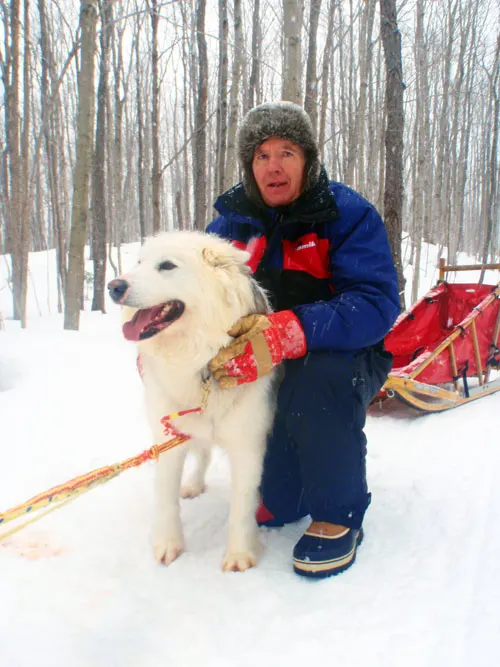
The Yukon Quest began in 1984 and runs every February for about 10-16 days (in fact, it starts this Saturday, Feb. 2). The 1,000-mile trail stretches between Whitehorse, Yukon and Fairbanks, Alaska, crosses four mountain ranges, and follows historical gold rush and mail delivery routes.
Temperatures during the race range from an average high of 6ºF to an average low of -13ºF. Although, temperatures of -40ºF and colder are not unusual. The race attracts a field of up to 50 international teams, each with one human musher and 14 dogs.
One of those teams this year is Matt Hall from Smokin’ Ace Sled Dog Kennels in Two Rivers, Alaska. Matt placed second in last year’s race, first in 2017 and received the Veterinarians’ Choice Award in 2016 (more on this award later in the post). Amanda Brooks from Smokin’ Ace took some time out from preparing for the race to speak with me about their dogs.
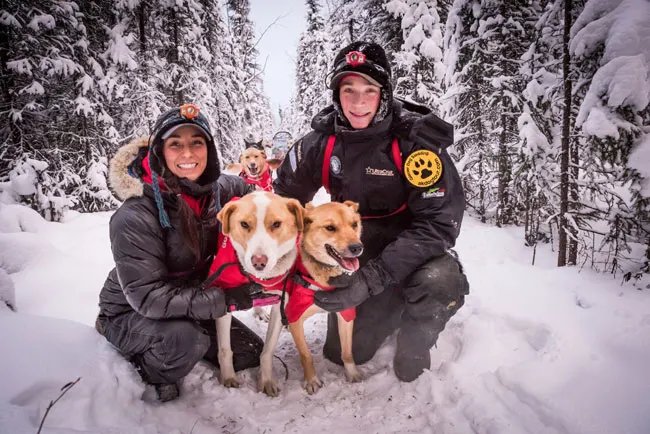
What should people know about sled dogs?
Sled dogs are born and bred to run! They’re intelligent, high-energy working dogs and are at their happiest when they’re challenged. Taking an Alaskan Husky out for a run is like taking your house dog for a walk—it’s fun for them! When conditioned and trained properly, the dogs should always feel like they could do more.
The Yukon Quest website explains that while “some kennels still concentrate solely on pure-bred sled dogs—typically Siberian Huskies, Alaskan Malamutes or Canadian or American Inuit Dogs—the majority of modern sled dogs… are ‘genetic mutts’… most commonly… referred to as ‘Alaskan Huskies.’”
What might surprise people about sled dogs?
Sled dogs are just as cuddly as any other dog! They love attention and butt rubs and are notorious bed hogs.
How do you train a dog to be a sled dog?
We start training as soon as they’re old enough to eat kibble. First we teach them ‘No’ and ‘Good.’ Soon we’ll take them on loose walks and teach them a come-all command to get everyone’s attention.
Once they’re a couple months old, we start training them to come to their names by working with them one-on-one. By the time they’re seven to eight months old we harness train them and go on short runs of less than one mile. This is solely to get them acquainted with the harness and gangline. Then we slowly build their stamina and endurance.
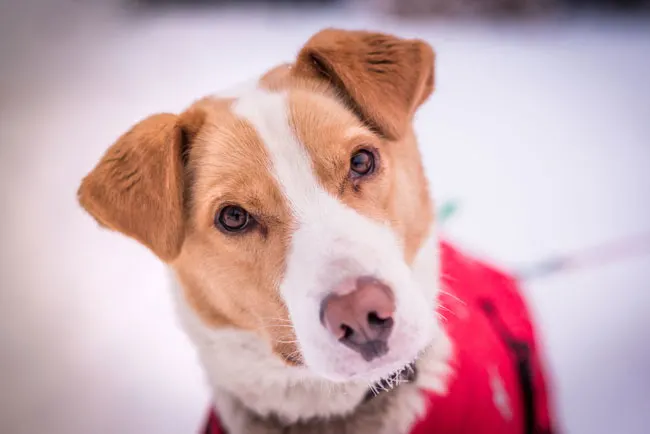
Older dogs are the best teachers, so we’ll run them alongside the younger dogs to teach them how to harness their excitement, patience and manners. Between the ages of 18 months to two years old, the yearlings are conditioned for longer miles (5-50 miles) at a slow and steady pace (8 mph).
It’s not until they are two to three years old that they start competitively racing. Whether they join the race team at two or three is dependent on both their mental and physical maturity.
Race training starts Sept. 1, and we train our team exactly how we would train ourselves for a marathon. Start off short and slowly build the miles. By the end of the race season in March, our team is conditioned to run 100-miles in one run!
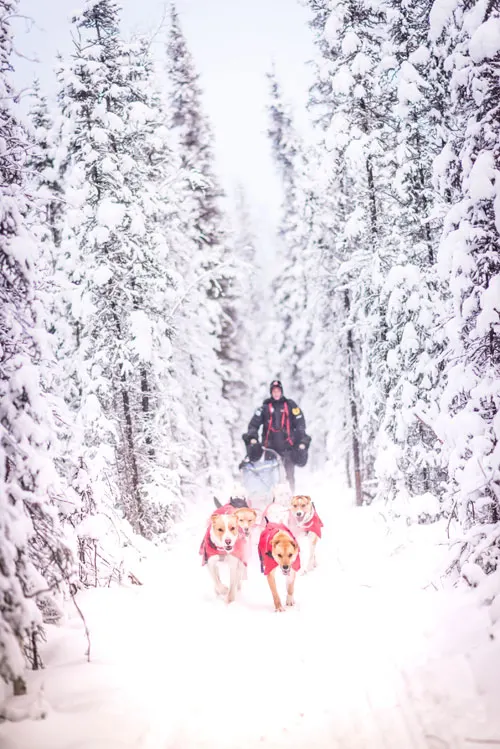
Lindsay has written before about the topic of when it’s safe to start running with a puppy. Joint, bone and muscle health is something that mushers and handlers care a great deal about. I followed up with the Yukon Quest head vet, Dr. Cristina Hansen, to learn how puppies’ ages factor into their training.
Dr. Hansen said that there is no set age at which it’s safe to start hard training, and she feels there are risks to starting too early. In her experience, most mushers don’t do much running or training with puppies until they are six to nine months old.
What qualities are important in sled dogs?
Intelligence, forward drive, thick coat, tough paws, good attitude and appetite.
What day-to-day care is important for sled dogs?
Morning chores are scooping [poop], watering and feeding. Afternoon snacks. Evening chores of scooping and feeding.
We’re always monitoring weight, appetite and stools to ensure each member of the team is healthy. Every two weeks we trim nails and restraw their houses, which is their bedding and insulation. Monthly, they get rounds of de-wormers and annual vaccinations keep them up-to-date on their records.
Loose walks for every dog are very important and making sure they’re getting enough exercise to keep them happy and conditioned.
At Smokin’ Ace, we go on loose walks with our dogs to make sure they have time to just be dogs (pee on things, smell things, flirt) and socialize with their peers. We always switch up their running partners as well, so they’re in a perpetual state of socialization.
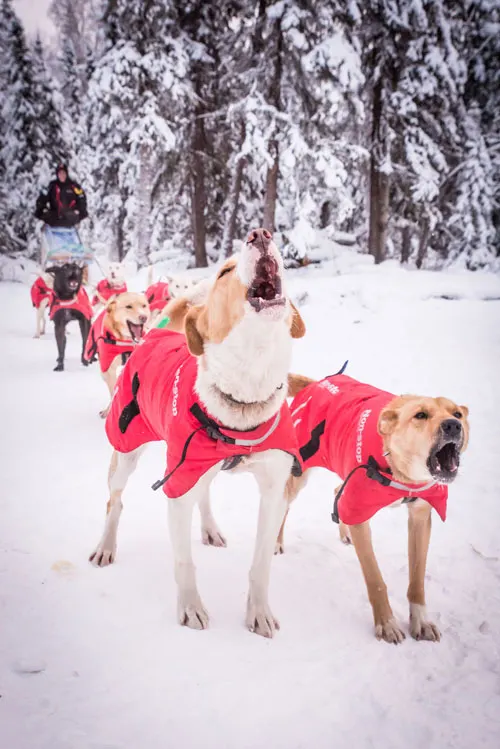
How do you care for the dogs during the race?
When you’re competing in a race, the dogs [can each] burn upwards of 14,000 calories [every day], so they eat much more. On average we’re feeding every two to three hours. Their diet consists of 50 per cent raw meat (beef, chicken, liver, salmon, fat) and 50 per cent high performance kibble.
Here’s a bit more from the Yukon Quest website about care during the race:
“Generally during the race, mushers run their teams in a 50-50 run-rest schedule. Typical patterns are “four on, four off”, meaning a four hour run followed by a four hour rest for the dogs. Longer runs are becoming more common as sled dogs are bred for greater endurance and training techniques improve.”
The race goes around the clock, so the dogs determine their schedule rather than the time of day or night. “During a typical rest stop, mushers remove their dogs’ booties, feed their dogs, cook their next meal, check and re-check their dogs’ feet, coat, harnesses and attitude,” and then feed themselves and, if they are lucky, sleep. Caring for 14 dogs is the priority and takes most of the mushers’ time.
The Yukon Quest is known for its focus on the health of the dogs. The Veterinary Team presents an award to the musher who demonstrates superior care of his or her sled dogs and remains competitive during the race.
Race veterinarians check every dog before, during and after the race. “It’s not unusual for a sled dog to receive a check-up at every stop along the way – that’s over ten visits with a veterinarian in a two or three week period.”
With only nine checkpoints along the 1,000-mile trail, the vast distance between stops means that mushers need to camp along the trail and to pack their sleds heavily.
Each musher must leave the checkpoints with a minimum of eight booties per dog and enough food and equipment for themselves and their team to safely travel to the next checkpoint. When teams reach the halfway point at Dawson City, they have a mandatory 36-hour rest stop. There are three other layovers during the race where mushers must stop for shorter designated lengths of time.
How many dogs does the average musher have? How do you select dogs for racing?
We have a medium-sized kennel of 40 dogs. Our race pool is currently 18 and our yearling team is comprised of 12.
The rest are retired race or dogs that didn’t make the cut for the race team and instead have joined our tour team. The dogs that retire from the race team are usually around seven or eight years old. That’s when they start slowing down. However they still have the heart to run!
Some dogs retire from the race team sooner, based on their desire to run. We have one dog who retired at two years old.
She didn’t like to run long distance of racing, but loved shorter tour loops of two-miles (and showing off to guests). It’s entirely up to the dog when they choose to retire and some dogs you have to force into retirement around 11 years old.
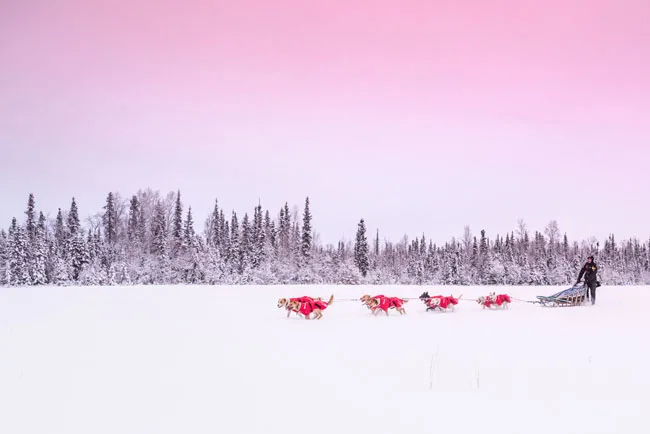
Once they’re ready for full retirement (we have 5 now), they live the rest of their days wandering around loose and lounging on couches. Sometimes, if the right person contacts us, we rehome them as a pet dog.
For example we’ve rehomed two brothers to a race veterinarian in Colorado. These two boys are getting loads of attention and wonderful care that they deserve.
A Yukon Quest team consists of 14 dogs. Over the course of the race, mushers will “drop” dogs at various checkpoints. Usually, dogs are dropped either as part of a planned race strategy or to prevent a minor injury from escalating into a major one, and not because of a major injury, illness, or accident. Mushers must have a minimum of six dogs to stay in the race.
What do sled dogs do in the off-season?
Our ‘off-season’ is spent on a glacier in Southeast Alaska working for Alaska Icefield Expeditions. Up there, there is snow so we can give short two-mile tours to cruise ship passengers.
Dogs cool down through their paws and mouths. The snow allows them to roll around and cool-off, even when it’s 70 degrees on the glacier.
If we stayed back home in the interior, the dogs wouldn’t be able to pull in team because temperatures rise up to 70-80 degrees. Those temperatures are far too hot for these guys to work in. So for the dogs that do stay behind from the glacier, they go on loose walks and group swims in the river.
The Yukon Quest starts this Saturday, Feb. 2 in Whitehorse, Yukon. Learn more about the race at www.yukonquest.com and follow all of the action on Facebook. To learn more about Amanda and Matt and their team at Smokin’ Ace Kennels visit www.smokinacekennels.org.
Photos by Whitney McLaren.
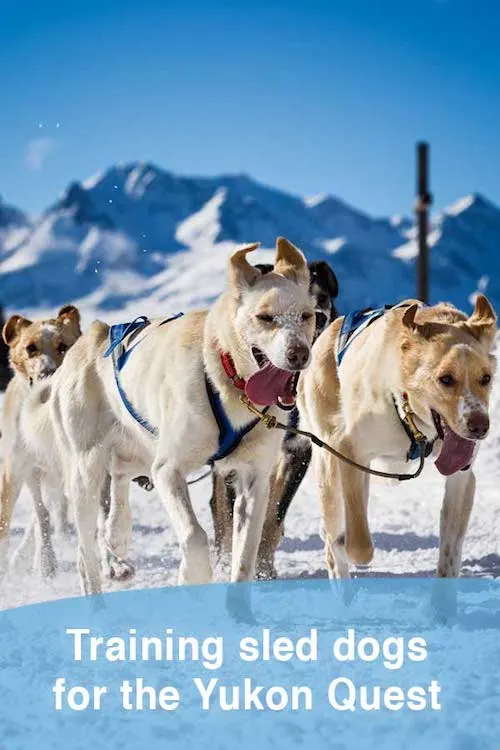
Have you ever gone dog sledding–even with your own dog? Does your dog like to run?
Julia Thomson is a blogger at Home on 129 Acres where she writes about her adventures of country living and DIY renovating. She and her family live on a 129-acre farm in Ontario, Canada. Follow Julia on Instagram here.
Related posts:

krizzia Mariles
Wednesday 10th of February 2021
I am really thankful for your articles but supporting this is animal cruelty. Dogs are often left without medical care and live in harsh conditions.
Sharon Wollenberg
Saturday 23rd of February 2019
Fascinating article. I learned a lot about sledding dogs that I did not know. Feeding all the dogs and the Veterinarian care. The training and commitment just like training for a marathon.
Super read!
Lindsay Stordahl
Saturday 23rd of February 2019
Yes, so glad you read it!
Dorothy "FiveSibesMom"
Tuesday 5th of February 2019
Fantastic post! As a Siberian Husky momma, I loved it and your interview with Smokin' Ace. Pinning to share, and also sharing over on my FiveSibes: Siberian Husky K-9 News & Reviews Facebook page!
Lindsay Stordahl
Tuesday 5th of February 2019
Thank you so much for sharing the post!
Barbara Rivers
Monday 4th of February 2019
Super interesting read - I had no idea these sled dog races existed! I enjoyed learning that part of the pups' diet is raw :)
Julia T.
Monday 4th of February 2019
I tried to get some more information on feeding the dogs. The vet explained that it's personal preference. A lot of the food seems to be warmed, which I guess helps the dogs to warm up. It also seems very soup-like, which I'm sure is important for hydration.
Holly/Emilia
Monday 4th of February 2019
When my kids were young and we were homeschooling, we would pick a musher and follow the Iditarod. It was always a fun project.
I think dog sports are fun to read about. It was interesting to learn that most of them are more mixed breed - not the classic malamute or Siberian husky that immediately springs to mind.
What a great article to write in honor of your dad.
Julia T.
Monday 4th of February 2019
What a great exercise with your kids. That's a good way to follow the race. I know I'm checking in to see how Matt Hall (the mushed in this article) is doing!
Lindsay Stordahl
Monday 4th of February 2019
Yes, I also did not know most of the dogs that do these races are mutts!